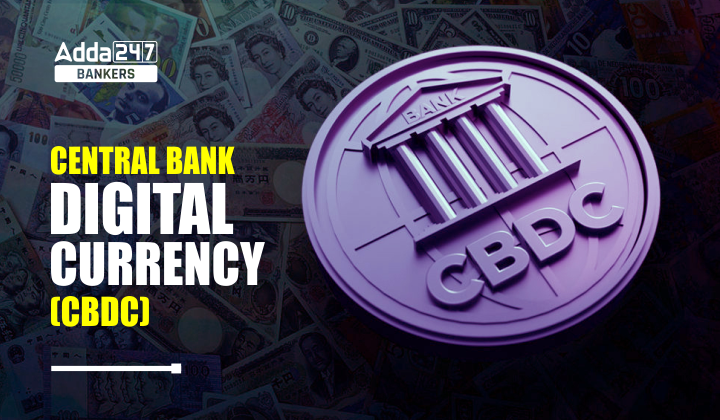Table of Contents
Management of currency is one of the core central banking functions of the Reserve Bank for which it derives the necessary statutory powers from Section 22 of the RBI Act, 1934. Along with the Government of India, the Reserve Bank is responsible for the design, production, and overall management of the nation’s currency, to ensure an adequate supply of clean and genuine notes in the economy.
The concept of money has experienced an evolution from Commodity to Metallic Currency to Paper Currency to Digital Currency. The changing features of money are defining the new financial landscape of the economy. Further, with the advent of cutting-edge technologies, the digitalization of money is the next milestone in monetary history. Advancement in technology has made it possible for the development of a new form of money viz. Central Bank Digital Currencies (CBDCs).
Key Motivations For Central Bank Digital Currencies (CBDCs)
CBDC, being a sovereign currency, holds unique advantages of central bank money viz. trust, safety, liquidity, settlement finality, and integrity. The key motivations for exploring the issuance of CBDC in India among others include:-
- Reduction in operational costs involved in physical cash management,
- Fostering financial inclusion,
- Bringing resilience, efficiency, and innovation to the payments system,
- Adding efficiency to the settlement system,
- Boosting innovation in cross-border payments space,
- Providing the public with uses that any private virtual currencies can provide, without the associated risks.
- The use of the offline feature in CBDC would also be beneficial in remote locations and offer availability and resilience benefits when electrical power or a mobile network is not available.
Design Choices For Central Bank Digital Currencies (CBDCs)
The key design choices to be considered for issuing CBDCs include:-
- Type of CBDC to be issued (Wholesale CBDC and/or Retail CBDC),
- Models for issuance and management of CBDCs (Direct, Indirect or Hybrid model),
- Form of CBDC (Token-based or Account-based),
- Instrument Design (Remunerated or Non-remunerated) and
- Degree of Anonymity
Types of Central Bank Digital Currencies (CBDCs) To Be Issued
CBDC can be classified into two broad types viz.
- General purpose or retail (CBDC-R):- Retail CBDC would be potentially available for use by all viz. private sector, non-financial consumers, and businesses, retail CBDC is an electronic version of cash primarily meant for retail transactions.
- Wholesale (CBDC-W):- Wholesale CBDC is designed for restricted access to select financial institutions. Wholesale CBDC is intended for the settlement of interbank transfers and related wholesale transactions.
Model for Issuance and Management of Central Bank Digital Currencies (CBDCs)
There are two models for issuance and management of CBDCs viz.
- Direct model (Single Tier model):- A Direct model would be the one where the central bank is responsible for managing all aspects of the CBDC system viz. issuance, account-keeping, and transaction verification.
- Indirect model (Two-Tier model):- In an Indirect model, the central bank and other intermediaries (banks and any other service providers), each play their respective roles. In this model central bank issues CBDC to consumers indirectly through intermediaries and any claim by consumers is managed by the intermediary as the central bank only handles wholesale payments to intermediaries. This is akin to the current physical currency management system.
Forms of Central Bank Digital Currencies (CBDCs)
CBDC can be structured as
- Token-based:- A token-based CBDC is a bearer instrument like banknotes, meaning whosoever holds the tokens at a given point in time would be presumed to own them. Also, in a token-based CBDC, the person receiving a token will verify that his ownership of the token is genuine.
- Account-based:- An account-based system would require maintenance of the record of balances and transactions of all holders of the CBDC and indicate the ownership of the monetary balances. In an account-based CBDC, an intermediary verifies the identity of an account holder.
Considering the features offered by both the forms of CBDCs, a token-based CBDC is viewed as a preferred mode for CBDC-R as it would be closer to physical cash, while an account-based CBDC may be considered for CBDC-W.
Degree of Anonymity
For CBDC to play the role of a medium of exchange, it needs to incorporate all the features that physical currency represents including anonymity, universality, and finality. Ensuring anonymity for a digital currency particularly represents a challenge, as all digital transactions would leave some trail. The degree of anonymity would be a key design decision for any CBDC. In this regard, reasonable anonymity for small-value transactions akin to anonymity associated with physical cash may be a desirable option for CBDC-R.
Conversion Rates & Denominations of Central Bank Digital Currencies (CBDCs)
The conversion rate will be 1 Digital Rupee = 1 Rupee and it will have the denominations as the physical Rupee i.e. ₹ 1, ₹ 2, ₹ 10, ₹ 20, ₹ 50, ₹ 100, ₹ 500 and even 50 paise coins.
Pilot Project of Digital Rupee- Retail segment (e₹-R)
The Reserve Bank of India (RBI) launched the first pilot of the Digital Rupee- Retail segment (e₹-R) on December 01, 2022. The pilot is covering select locations in a closed user group (CUG) comprising participating customers and merchants. The e₹-R pilot currently covers the five cities of Mumbai, New Delhi, Bengaluru, Bhubaneswar, and Chandigarh. RBI has identified eight banks for phase-wise participation in the retail pilot project. These include the State Bank of India, the ICICI Bank, the Yes Bank and the IDFC First Bank, the Bank of Baroda, the Union Bank of India, the HDFC Bank, and the Kotak Mahindra Bank. The participating banks have selected individuals/account holders for the trials. a separate e₹ wallet has been conceived in the pilot considering that e₹ forms part of the currency system while other digital wallets form part of the payments system. Users will be able to transact with e₹-R through a digital wallet offered by the participating banks and stored on mobile phones/devices.
Other Post





 GA Capsule for SBI Clerk Mains 2025, Dow...
GA Capsule for SBI Clerk Mains 2025, Dow...
 The Hindu Review October 2022: Download ...
The Hindu Review October 2022: Download ...
 Banking, Economy Capsule for SBI PO Main...
Banking, Economy Capsule for SBI PO Main...





